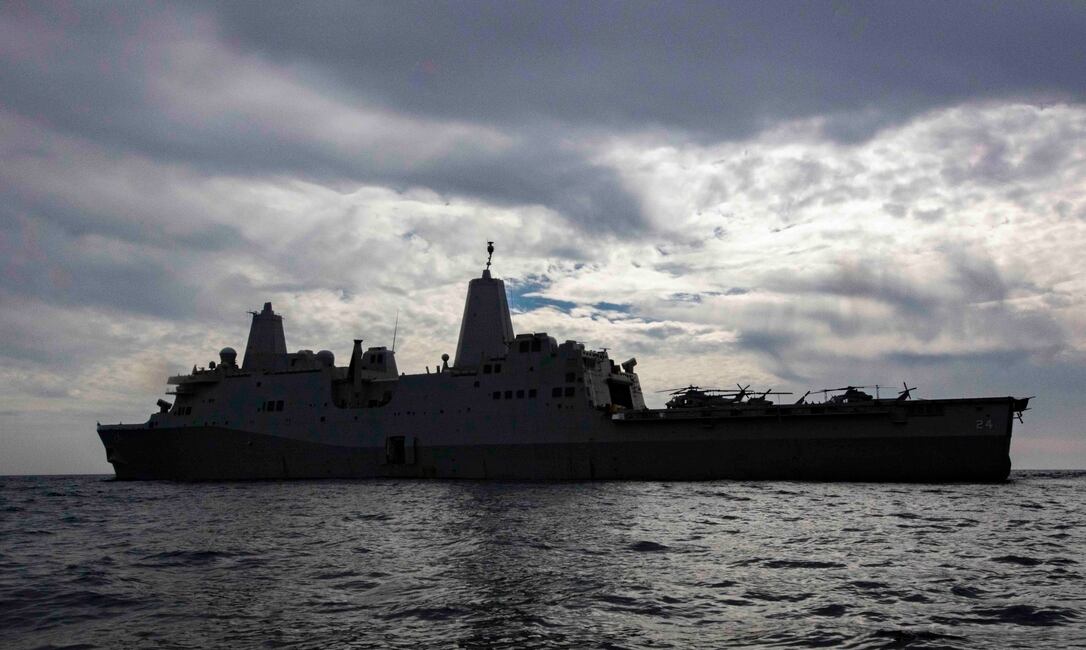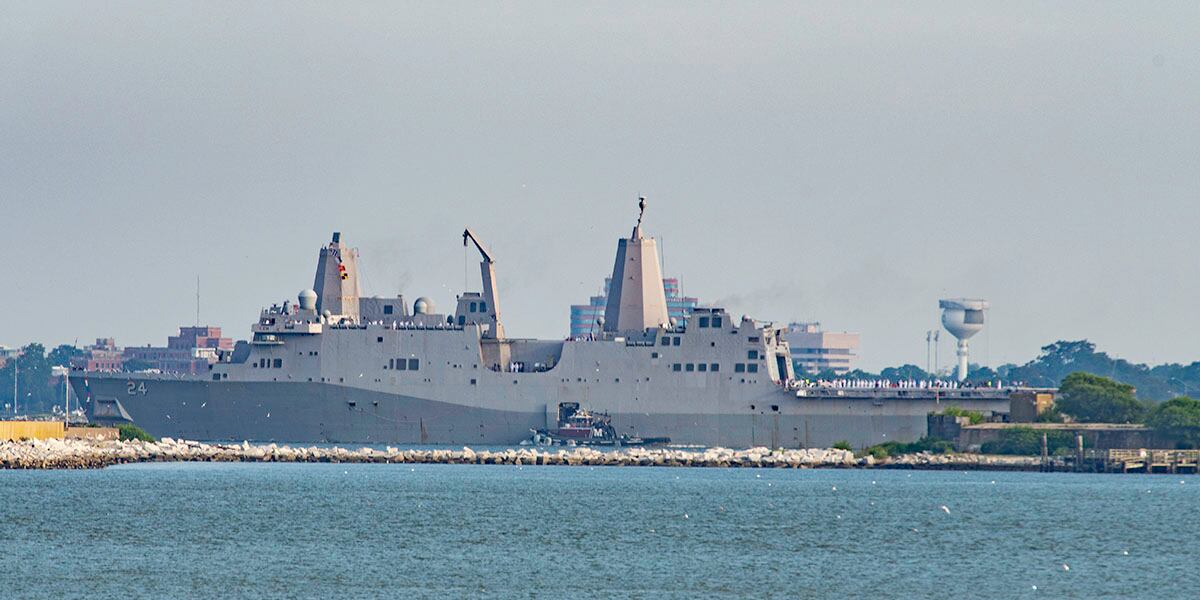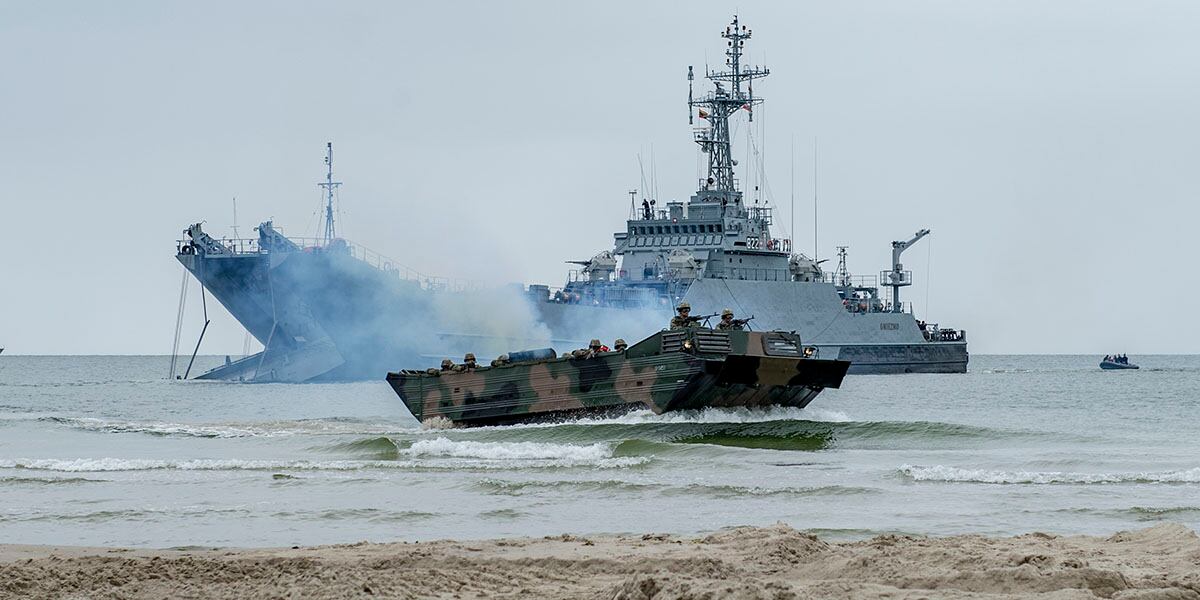NORFOLK — The Kearsarge Amphibious Ready Group, minus most of the 22nd Marine Expeditionary Unit, returned home on Thursday after an atypical seven-month deployment.
Led by the amphibious assault ship Kearsarge, the ARG included the landing platform dock Arlington and the dock landing ship Fort McHenry and carried more than 4,500 sailors and Marines.
They left Norfolk on Dec. 17 but their deployment really became three separate cruises. The trio of warships often operated alone, thousands of miles away from each other, overseen by different combatant commanders.
They combined to run eight exercises and at least three named operations while also making port visits in 13 different countries across Europe and the Middle East, according to a Wednesday press release by the ARG heralding their arrival.
“This ARG’s ability to disaggregate forces and operate efficiently and effectively across multiple areas of responsibility during this deployment enabled us to simultaneously fulfill the security requirements of three combatant commanders and that’s no easy task," said Capt. Joseph O’Brien in the press release.
O’Brien assumed command of the Kearsarge ARG on April 12 during the flagship’s port visit to Bahrain.
“It took a lot of coordination, training, and expertise from the deckplates up the chain of command and I couldn’t be prouder of this team,” he added.
RELATED

Kearsarge spent most of its time in the U.S. 5th Fleet’s area of operations, sailing more than 37,600 miles on its deployment and launching 1,775 sorties split between the Marine air combat element and the Chargers of the Navy’s Sea Combat Squadron 26.
The missions included flights into Afghanistan from the North Arabian Sea, according to Chief Mass Communications Specialist Peter Lawlor, Kearsarge’s spokesman.
The Arlington concentrated on the Mediterranean Sea, except for a brief June excursion through the Suez Canal to operate in the Gulf of Aden under 5th Fleet’s control during heightened tensions with Iran.
The ship also weathered the loss of one of their own, when Lt. Kaylie Ludwig was found unresponsive and pronounced dead on May 21 during a port visit to Naval Station Rota in Spain.

But Fort McHenry can claim the most unusual cruise.
It was the first American warship to enter the Black Sea since the Russian seizure on Nov. 25 of three Ukranian gunboats in the Kerch Strait.
After sending a message to Moscow, it departed Constanta, Romania, in early January and began to confront a very different problem.
Sailors and Marines on board Fort McHenry began showing symptoms of viral parotitis, an infection similar to the mumps that’s marked by fever, dehydration and chills.
The outbreak nixed port calls for about 110 days, although the crew eventually took liberty in Jebel Ali in the United Arab Emirates, leaving on May 13.
The last six weeks of Fort McHenry’s cruise included visits to the German port of Kiel and Riga, the capital of Latvia, for the U.S. 2nd Fleet’s Baltic Operations exercise.
RELATED

Most of the Marines went home first.
The ARG arrived off North Carolina’s Camp Lejeune on July 15 to disembark the bulk of 22nd MEU and their gear.
Kearsarge and Arlington then sailed north to Norfolk Naval Station while Fort McHenry returned to Florida’s Naval Station Mayport.
Mark D. Faram is a former reporter for Navy Times. He was a senior writer covering personnel, cultural and historical issues. A nine-year active duty Navy veteran, Faram served from 1978 to 1987 as a Navy Diver and photographer.




